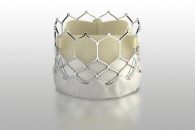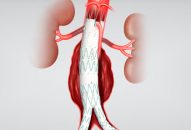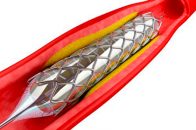This work reports one year outcomes of the BVS Expand registry. Multiple studies have shown the safety and feasibility of the everolimus eluting bioresorbable scaffold ABSORB (Abbott Vascular, Santa Clara, California), but medium and long term data are limited and only on simple lesions. This is a prospective single-center registry assessing ABSORB performance in…
SAPIEN 3: Low One-Year-Mortality in High Risk or Inoperable Patients
In the first PARTNER trial (Placement of Aortic Transcatheter Valves), mortality at one year was 24% for high risk patients and 31% for inoperable patients. A recent report on SAPIEN 3 outcomes at 30 days ─ the last generation balloon expandable valve ─ showed a rather lower adverse events rate. However, additional information at longer…
Beta-Blockers for Revascularized Patients: To Prescribe or Not?
This study examines predictors and outcomes associated with the prescription of beta-blockers at discharge after a successful coronary angioplasty in patients with stable chronic angina WITHOUT prior history of acute myocardial infarction or heart failure. The benefit of beta-blockers in patients with acute myocardial infarction or systolic heart failure is well documented. However, their…
Peri-Procedural MI Reduction: Cangrelor or Clopidogrel?
Cangrelor is an intravenous P2Y12 inhibitor approved to reduce peri-procedural ischemic events in patients undergoing PCI that have not previously received any other P2Y12 inhibitor. The CHAMPION PHOENIX trial randomized a total of 11,145 patients to cangrelor vs. clopidogrel. The study sought to explore the effect of cangrelor on peri-procedural acute myocardial infarction…
Bivalirudin or Heparin to Decrease Cerebral Embolization Post TAVI?
Cerebral embolization is a relatively frequent complication during transcatheter aortic valve replacement (TAVR). The hypothesis behind this study is that the incidence of cerebral embolization might be decreased by anticoagulation with bivalirudin, instead of heparin. The first study objective was to determine the proportion of patients with new cerebral embolus after TAVI and…
TAAA: Better Outcomes with Renal Fenestration
Courtesy of Dr. Carlos Fava. Thoraco-abdominal aneurysms (TAAA) are a real challenge for surgeons. So far, endovascular repair have rendered good results in these aneurysms, but branch occlusion continues to be their Achilles’ heel”. 449 patients were analyzed, 235 (52%) were treated with branched devices (BEVAR) and 214 (48%) with fenestrated devices (FEVAR).…
Optimal Duration of DAPT: How to Predict Long-Term Events
Courtesy of Dr. Santiago F. Coroleu. Dual antiplatelet therapy (DAPT) with aspirin and clopidogrel after percutaneous coronary intervention (PCI) reduces the risk for coronary thrombotic events (CTEs) at the expense of increasing risk for major bleeding (MB). However, the lack of information to accurately predict the occurrence of each event in out-of-hospital patients under…
Closure Devices vs. Manual Compression
Courtesy of Dr. Guillermo Migliaro. Post PCI major bleeding has been associated with short term mortality in acute coronary syndromes (ACS). Even though studies have shown the transradial approach is safer than the femoral, especially in high risk subgroups ─ mainly STEMI patients ─ the femoral access site continues to be widely used. …
Pre-TAVI Mitral Regurgitation Is Associated with Higher Mortality
Courtesy of Dr. Carlos Fava. This study sought to analyze the clinical impact and the level of improvement of mitral regurgitation (MR) in patients who receive a transcatheter aortic valve replacement (TAVR), and to find potential candidates for double valve repair with percutaneous techniques. Of 1.110 patients included, 177 (15.9%) suffered from severe pre-TAVR mitral…
DES in primary PCI: The Best Option?
Courtesy of Dr. Brian Nazareth Donato. The relative safety of drug-eluting stents (DES) and conventional bare-metal stents (BMS) in primary angioplasty (percutaneous coronary intervention, PCI) in patients with ST elevation myocardial infarction (STEMI) is still subject of debate. A search was carried out using Medline, CENTRAL, EMBASE, TCTMD and Cardiosource. There were 9673 patients included,…








